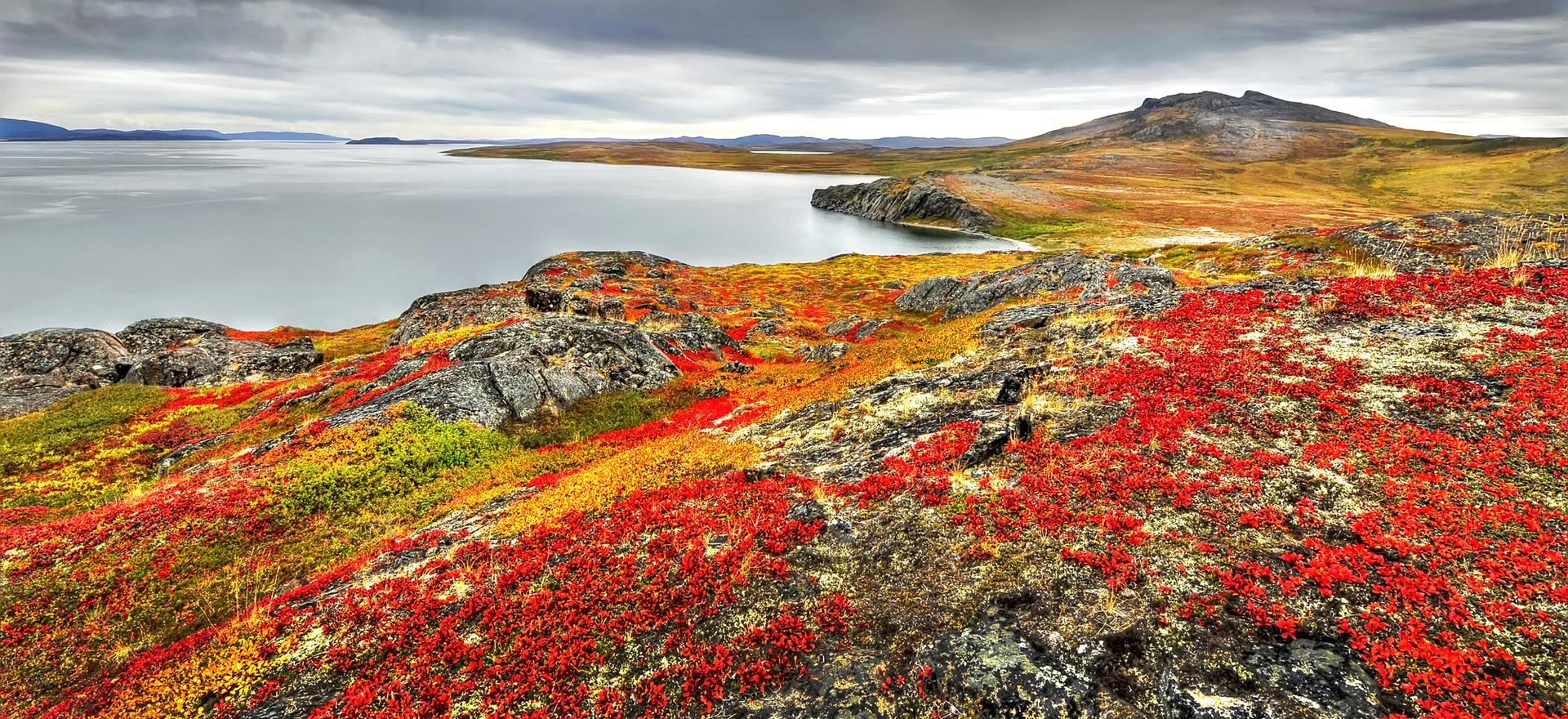The first brave wanderers to explore the ice, islands, mountains, and vast tundra of Nunavut were the forebears of today's Inuit. Successive waves of migration from what is now Alaska populated the land with the cultures that would become the Tuniit (or Dorset), and then the Thule, which became today's Inuit.
It is said that among these wandering peoples, one wanderer has journeyed longer, faced more adversity, and achieved more incredible feats than any other. His name is Kiviuq, and some Inuit will tell you he is still alive today.
When most people think of Arctic explorers, Roald Amundsen, Sir John Franklin, or George Back may come to mind. But while they were backed with teams and supplies, and often saved from death's door by Inuit in times of need, Kiviuq travelled the Arctic Ocean by kayak, engaging in shamanic battles and finding romance. The stories of Kiviuq, told by Inuit elders across Nunavut, carry on his legacy.
But other legacies exist--a tin can here, a grave site there--that tell the more recent stories, of the many explorers who wandered into a land and ocean they did not know, often to their own peril. These remnants can be seen today by travellers in the Arctic, and the sites below are on the itineraries of many Arctic adventure cruises.
Beechey Island
Beechey Island, sitting just southwest of the massive Devon Island, may be tiny, but its significance in the search for Franklin and his men has been huge. During the 1850-1851 search for Franklin, who’d left England with two ships in 1845 to find the Northwest Passage and was never seen again, the graves of three of his crew were found on Beechey Island at what had been the ships’ first winter harbour.
These graves were marked with the names of seamen John Torrington and John Hartnell, as well as Royal Marine William Braine, and with the dates of 1845-46. An enormous cairn was found nearby but no message was found inside or nearby. While no record has ever been found here, it is thought by some that Franklin almost certainly would have left one.
While Franklin’s ships have finally been found, the mystery of what happened to the ill-fated expedition has yet to be solved.
Just across Barrow Strait, on Devon Island, is the great mountain known as Caswell Tower. In its shadow, on Radstock Bay, tins and other artefacts from Franklin’s search were found. There are also archeological sites of where the Thule had built qarmat homes, made of rock, whale bone, and sod, with skin roofs.
Fort Ross
On the southeastern tip of Somerset Island still sits a Hudson’s Bay Company trading post, now uninhabited. It ran for just 11 years, but seeing the post way out here in the middle of the Arctic shows to what extent the company went to establish itself in the far reaches of the country’s north. Of course, the Inuit and their predecessors had been operating in this area for more than 1,000 years, and archeological sites nearby show signs of their ancient occupation and use of the land.
King William Island
King William Island has been the epicentre of the search for Franklin. After the finds on Beechey Island, the search largely focused on this area. Eventually, in 2014 and 2016, Franklins ships Erebus and Terror would be found in Victoria Strait in Terror Bay, at the south end of the island. Artefacts from the expedition’s tragic end line the western and southern shores of King William island: graves, bones, records, and a lifeboat remain at Victory Point at the northwest, and further graves and skeletons stretch down as the crew marched to their end. Stories have been passed down by the Inuit living in the area of the deathly apparitions, appearing more ghosts than men in their final days, continuing unresponsively in their final march, some being sheltered by Inuit for a winter before continuing on.
